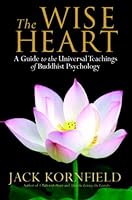My own summary of the nature of mindfulness is that it depends on our WILLINGness to be completely present.
- Welcoming. This refers to our openness to experience, and is the opposite of experiential avoidance (EA - see this previous post). Our typical response to difficult experiences is EA: we try to avoid or reject the experience. This actually increases our distress, since experiences cannot really be “erased” once they have occurred. It turns out that EA adds insult to injury: we have our original distress and we have the damage done by our misguided attempts to refuse it. Being welcoming is not simply passive acceptance, but a deliberate choosing of this very experience, regardless of whether it is pleasant or unpleasant.
- Intentional. Our ability to be mindful depends on forming and sustaining the intention to be mindful. We make a commitment to cultivate mindful awareness, and encourage ourselves in this direction throughout the day. Without our intent, (what Jon Kabat Zinn talked about as being mindful “on purpose”) we would not be able to take advantage of the opportunities we have for mindfulness.
- Letting go. To be mindful, we have to develop the ability to extricate ourselves from the proliferation of thought (papanca) that results in mental grasping or clinging (upadana). Letting go of a train of thought, once we have become involved in it, is the psychological process that lets us turn dreaming into wakefulness. Letting go is required for that ability to take a fresh relationship to what is happening that we call “beginner’s mind.”
- Loving. Being loving means accepting what is, as it is. We could call this, taking good care of the experience. “Loving exactly what is” is non-striving in nature, and it is the essential condition of intimacy.
- Inclusive. We bring our whole self to our encounter with the world, and we are aware that there are always vast dimensions of both self and the world that we cannot experience at any given time. Mindfulness is willing to include the aspects of the world that we normally exclude with our habits and prejudices.
- Non-reactive. Gradually, in the practice of mindfulness, we come to realize that an experience is not necessarily a call to action. We are descriptive rather than evaluative. Learning to be non-reactive is necessary condition for being welcoming. It opens the way for us to be responsive to our problems rather than simply reacting in an automatic way.
- Grounded. To be grounded in the present moment is to know our experience for what it is. A synonym for “grounded” might be “realistic.” Thoughts are not fused with reality, and we do not mistake our thoughts, concepts, or linguistic conventions for the actual world. When we are grounded in our experience (present moment awareness) and realistic about what it is (thoughts are just thoughts, not facts) we are in the best position to respond with skillfulness.
This is a brief outline of the factors of mindfulness. I’d appreciate your thoughts, questions, and feedback.



![Reblog this post [with Zemanta]](http://img.zemanta.com/reblog_e.png?x-id=d45c9ffe-974d-4a1a-a68a-3644093223e2)



4 comments:
Thank you for this. I have been working with a 3-step process from Pema Chodron's talks and also with the RAIN steps from Jack Kornfield's books. This outline of 7 steps is very helpful to me in filling in more of the multiple aspects of the process.
That was a wonderful post, and so very helpful! Thank you, for leaving a comment on my blog, it too was helpful. I will be coming back and checking your site out later.
I came here from Kikipotamus. Enjoyed reading your descriptions of mindfulness. I suppose one cant' read too many approaches to describing present moment awareness. Not that it is complex, but rather so hard to remember to be there. If that's what one is doing...remembering. For I suppose at some point it becomes second nature.
The Sanskrit word that we translate as "mindfulness" (sati) actually does have the connotation of "remembering," so your comment is in line with the ancient insights. I think that the more we practice, the better we get at remembering to be mindful, but it doesn't seem to be an effortless "default" for anyone (with the possible exception of Thich Nhat Hanh!). Thanks for your comments.
Post a Comment